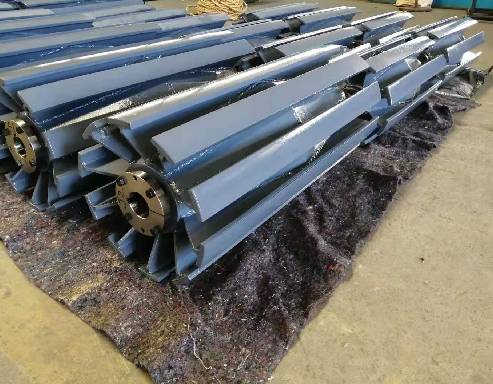 Afrikaans
Afrikaans  Albanian
Albanian  Amharic
Amharic  Arabic
Arabic  Armenian
Armenian  Azerbaijani
Azerbaijani  Basque
Basque  Belarusian
Belarusian  Bengali
Bengali  Bosnian
Bosnian  Bulgarian
Bulgarian  Catalan
Catalan  Cebuano
Cebuano  Corsican
Corsican  Croatian
Croatian  Czech
Czech  Danish
Danish  Dutch
Dutch  English
English  Esperanto
Esperanto  Estonian
Estonian  Finnish
Finnish  French
French  Frisian
Frisian  Galician
Galician  Georgian
Georgian  German
German  Greek
Greek  Gujarati
Gujarati  Haitian Creole
Haitian Creole  hausa
hausa  hawaiian
hawaiian  Hebrew
Hebrew  Hindi
Hindi  Miao
Miao  Hungarian
Hungarian  Icelandic
Icelandic  igbo
igbo  Indonesian
Indonesian  irish
irish  Italian
Italian  Japanese
Japanese  Javanese
Javanese  Kannada
Kannada  kazakh
kazakh  Khmer
Khmer  Rwandese
Rwandese  Korean
Korean  Kurdish
Kurdish  Kyrgyz
Kyrgyz  Lao
Lao  Latin
Latin  Latvian
Latvian  Lithuanian
Lithuanian  Luxembourgish
Luxembourgish  Macedonian
Macedonian  Malgashi
Malgashi  Malay
Malay  Malayalam
Malayalam  Maltese
Maltese  Maori
Maori  Marathi
Marathi  Mongolian
Mongolian  Myanmar
Myanmar  Nepali
Nepali  Norwegian
Norwegian  Norwegian
Norwegian  Occitan
Occitan  Pashto
Pashto  Persian
Persian  Polish
Polish  Portuguese
Portuguese  Punjabi
Punjabi  Romanian
Romanian  Russian
Russian  Samoan
Samoan  Scottish Gaelic
Scottish Gaelic  Serbian
Serbian  Sesotho
Sesotho  Shona
Shona  Sindhi
Sindhi  Sinhala
Sinhala  Slovak
Slovak  Slovenian
Slovenian  Somali
Somali  Spanish
Spanish  Sundanese
Sundanese  Swahili
Swahili  Swedish
Swedish  Tagalog
Tagalog  Tajik
Tajik  Tamil
Tamil  Tatar
Tatar  Telugu
Telugu  Thai
Thai  Turkish
Turkish  Turkmen
Turkmen  Ukrainian
Ukrainian  Urdu
Urdu  Uighur
Uighur  Uzbek
Uzbek  Vietnamese
Vietnamese  Welsh
Welsh  Bantu
Bantu  Yiddish
Yiddish  Yoruba
Yoruba  Zulu
Zulu Essential Components for Roller Conveyor Systems and Their Functionality
Roller Conveyor Components An Overview
Roller conveyors are an essential part of modern material handling systems, widely used in various industries such as manufacturing, logistics, and warehousing. They facilitate the efficient movement of goods, reducing manual labor and increasing productivity. Understanding the components that make up roller conveyors is crucial for optimizing their performance and ensuring their longevity. This article will delve into the key components of roller conveyors, their functions, and considerations for their maintenance.
1. Rollers
The rollers are the core components of roller conveyors. Typically made from materials such as steel, plastic, or rubber, they facilitate the movement of products along the conveyor line. The choice of roller material depends on the type of products being transported and the environment in which the conveyor operates. Rollers can be of different diameters and strengths, tailored to carry various loads. Additionally, they can be designed to be gravity-driven (free-rolling) or powered, enhancing their versatility.
2. Frames
The frame serves as the backbone of the roller conveyor system, providing structural support to the entire assembly. Made from durable materials like galvanized steel or aluminum, the frame needs to be robust enough to withstand the operational stress and weight of the conveyed products. Designs can vary from simple structures to more complex configurations that include features like adjustable heights and widths to cater to specific operational needs.
3. Drive System
In powered roller conveyors, the drive system plays a critical role in controlling the movement of the rollers. This system typically includes motors, drives, and belts that synchronize the motion of the rollers. Electric motors are the most common choice for powering roller conveyors, providing a reliable and consistent force to keep the products moving smoothly. Variable speed drives can also be incorporated, allowing for adjustments based on the material being conveyed.
4. Idlers
roller conveyor components

Idlers are additional rollers that support the conveyor system but do not drive the motion. They are strategically placed along the conveyor line to stabilize the load, support the roller frames, and reduce friction. Using the right number of idlers can prevent sagging and misalignment, ensuring that products remain on track during transport.
5. Supports and Guides
Supports are essential for maintaining the proper height and alignment of the rollers. They help distribute the weight of the conveyor and the products being transported, minimizing wear and tear on the structure. Guides assist in steering products as they move along the conveyor, preventing them from falling off the sides. These components are particularly useful for handling irregularly shaped items or materials that could easily shift during movement.
6. Belts and Chain Drives
In some roller conveyor systems, belts or chain drives can be used in conjunction with the roller components. Such accessories work to increase the gripping power on the load or to synchronize the motion between multiple conveyor sections. They enhance overall efficiency by ensuring that products move seamlessly from one zone to another without interruption.
7. Maintenance and Upkeep
Regular maintenance of roller conveyor components is crucial for ensuring their longevity and reliability. Key maintenance practices include inspecting rollers for wear, checking alignment and tension on drive systems, and looking for signs of damage on the frame and supports. Preventive maintenance not only extends equipment life but also minimizes downtime, leading to increased productivity.
Conclusion
Roller conveyor systems are a vital asset in many industrial settings, and their effectiveness is largely dependent on the quality and condition of their components. A solid understanding of roller conveyor components—such as rollers, frames, drive systems, and support structures—can help businesses make informed decisions about their material handling solutions. By focusing on proper maintenance and innovative designs, companies can optimize their roller conveyors, ensuring smooth operations and maximum efficiency. Investing in quality components and maintenance not only enhances productivity but also contributes to a safer and more reliable work environment.
-
Revolutionizing Conveyor Reliability with Advanced Rubber Lagging PulleysNewsJul.22,2025
-
Powering Precision and Durability with Expert Manufacturers of Conveyor ComponentsNewsJul.22,2025
-
Optimizing Conveyor Systems with Advanced Conveyor AccessoriesNewsJul.22,2025
-
Maximize Conveyor Efficiency with Quality Conveyor Idler PulleysNewsJul.22,2025
-
Future-Proof Your Conveyor System with High-Performance Polyurethane RollerNewsJul.22,2025
-
Driving Efficiency Forward with Quality Idlers and RollersNewsJul.22,2025





























